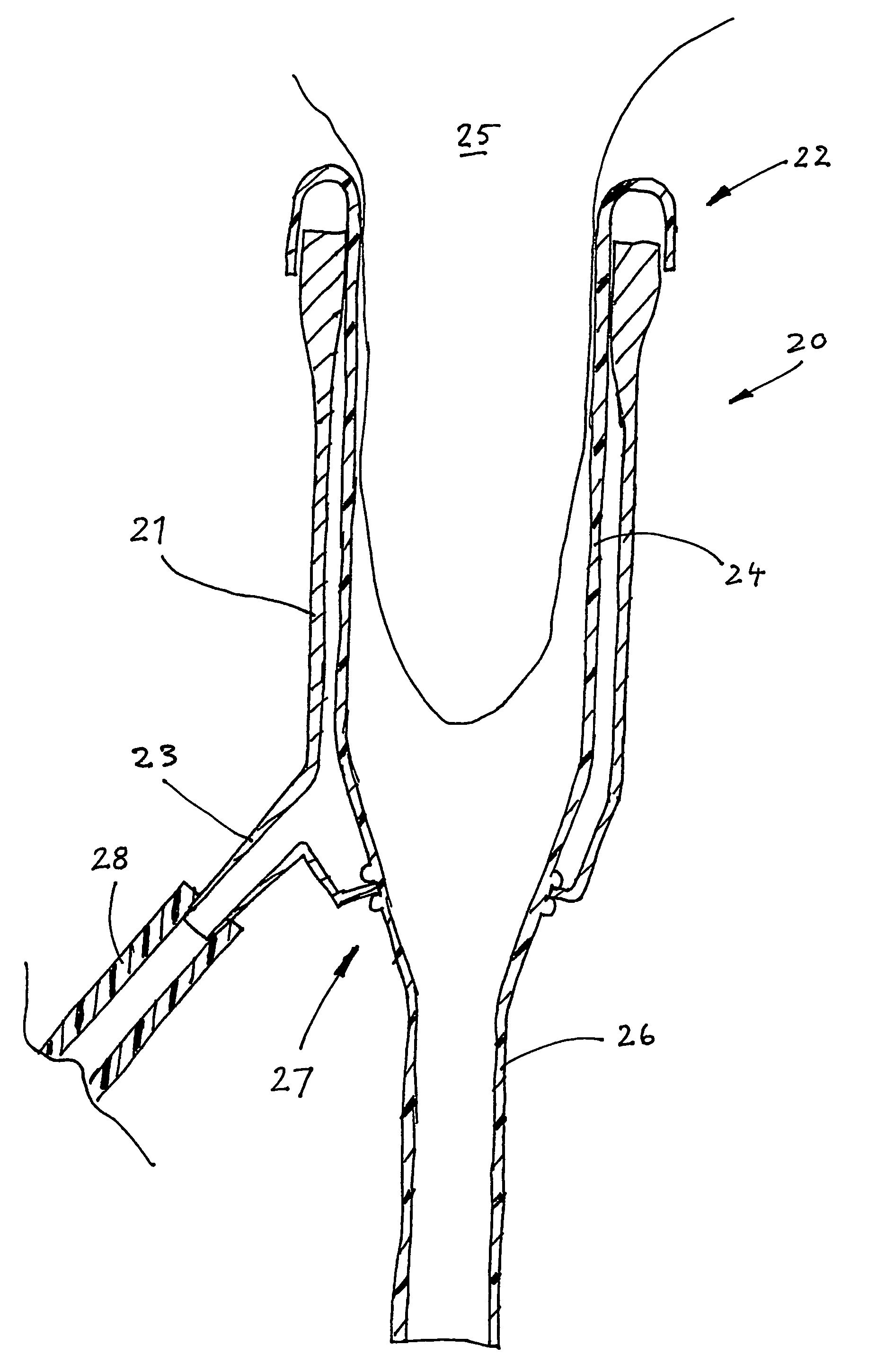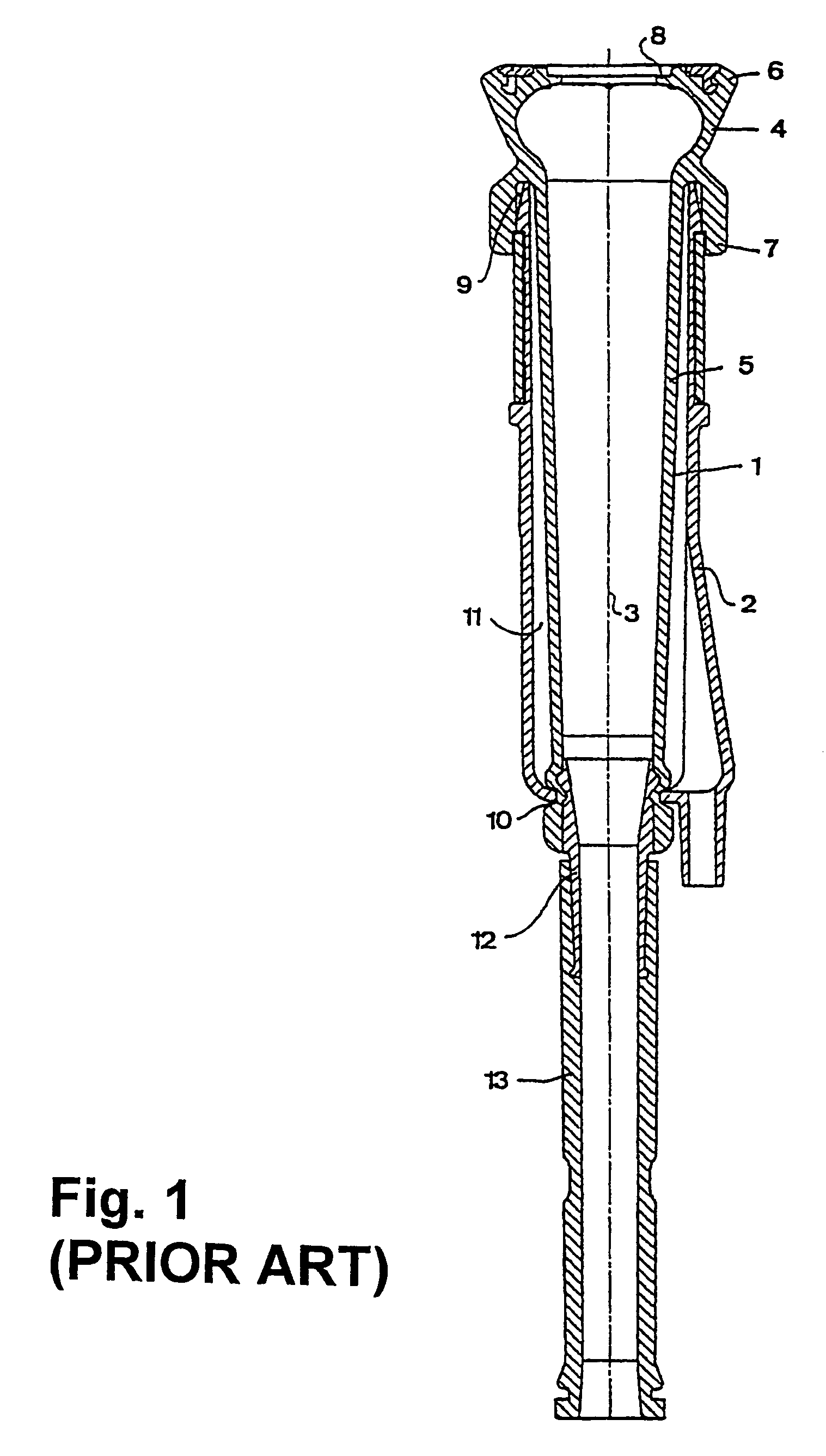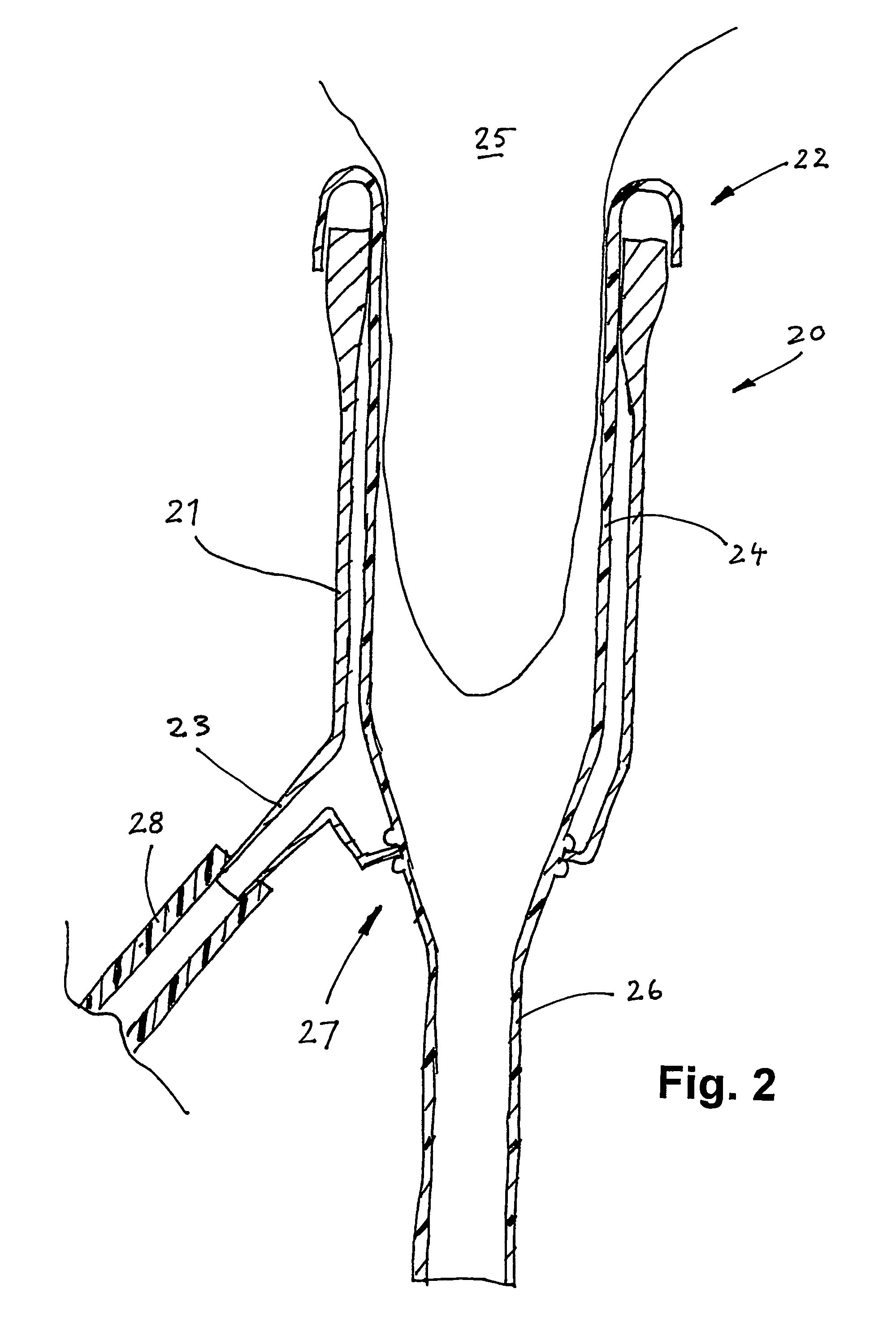Milking devices
a technology of milking device and sour cream, which is applied in the field of milking device, can solve the problems of not meeting the above requirements to a total satisfaction degree, and achieve the effects of reducing processing costs, reducing processing steps, and simplifying processing
- Summary
- Abstract
- Description
- Claims
- Application Information
AI Technical Summary
Benefits of technology
Problems solved by technology
Method used
Image
Examples
Embodiment Construction
[0019]For the purpose of this application, the expression “liner” or “teat cup liner” is taken to encompass a device usable together with a milking apparatus or system, that is to be used in the dairy business e.g. in contact with the milk, and therefore must comply with regulations relating to materials and articles intended to come into contact with foodstuffs. A liner comprises at least a teat receiving flexible sleeve, adapted to be positioned on / over a teat, suitably in a close fit. At the end proximal of the teat receiving end, there can be provided a short milk tube, to be attached to the teat cup central. It can also comprise a supply tubing for pulsating medium, referred to as a “pulsation tubing”. It is to be noted that the liner according to the invention may be used for various different animals, e.g. cows, buffalos, sheep and goats and other ruminant animals.
[0020]“A teat cup” is taken to be a device comprising a housing, “teat cup shell” in which a liner, as defined ab...
PUM
| Property | Measurement | Unit |
|---|---|---|
| elongation | aaaaa | aaaaa |
| temperature | aaaaa | aaaaa |
| tensile strength | aaaaa | aaaaa |
Abstract
Description
Claims
Application Information
 Login to View More
Login to View More - R&D
- Intellectual Property
- Life Sciences
- Materials
- Tech Scout
- Unparalleled Data Quality
- Higher Quality Content
- 60% Fewer Hallucinations
Browse by: Latest US Patents, China's latest patents, Technical Efficacy Thesaurus, Application Domain, Technology Topic, Popular Technical Reports.
© 2025 PatSnap. All rights reserved.Legal|Privacy policy|Modern Slavery Act Transparency Statement|Sitemap|About US| Contact US: help@patsnap.com



